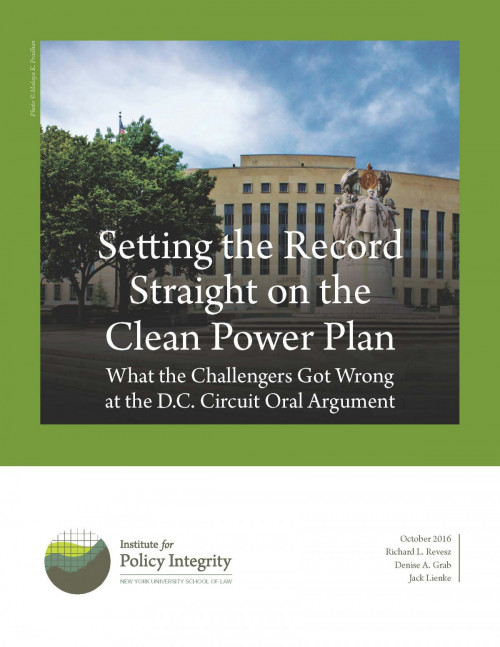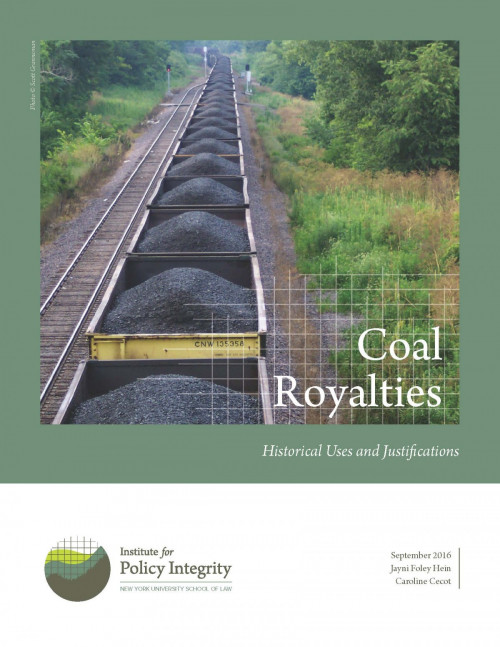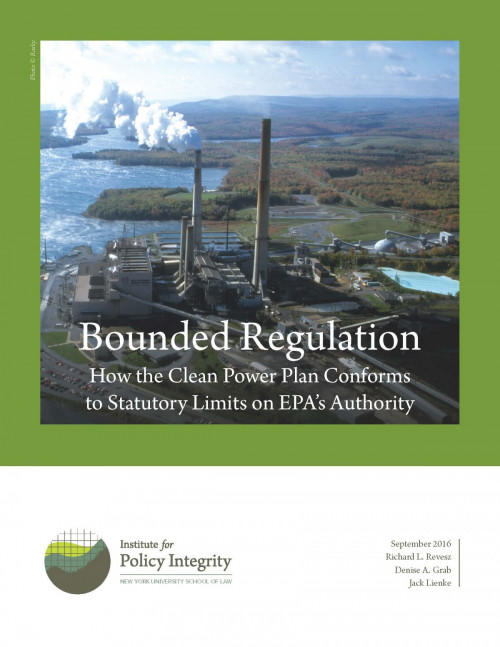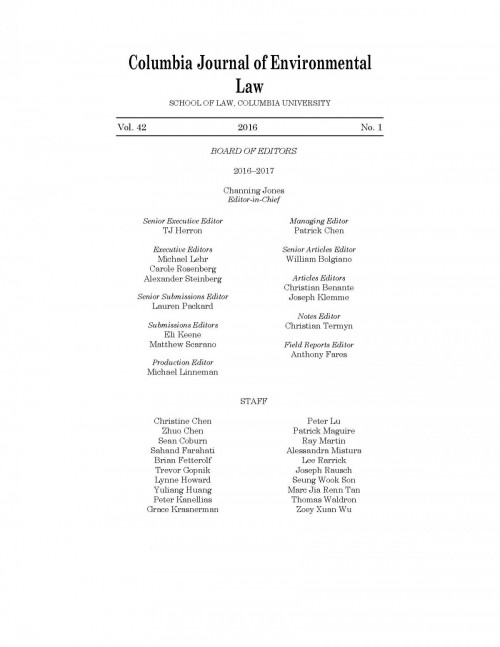The Institute for Policy Integrity produces a variety of publications. Our research reports develop in-depth research on our core issues, while our policy briefs and issue briefs provide focused analysis on more timely or particular topics. Our academic articles and working papers offer original scholarly research and analysis from established experts as well as fresh new voices.
Latest Publications
-

Setting the Record Straight on the Clean Power Plan
What the Challengers Got Wrong at the D.C. Circuit Oral Argument
On September 27, opponents of the U.S. Environmental Protection Agency’s Clean Power Plan presented their case against the rule in a hearing before the U.S. Court of Appeals for the D.C. Circuit. The Clean Power Plan aims to reduce carbon dioxide emissions from the nation’s existing power plants. A coalition of states, utilities, coal companies, and other industry groups have sought to block the rule since it was first proposed in June 2014, while a competing group of states, municipalities, power companies, environmental and public health organizations, and clean energy producers have intervened to support the EPA. Over the course of the seven-hour hearing, the petitioners challenging the Clean Power Plan asserted and implied a number of things that don’t stand up to scrutiny. This report sets the record straight on some of their more notable misstatements.
-
Détente from the Air
Monitoring Air Pollution during the Cold War
During the period of détente in the 1970s, a Norwegian proposal to construct an air pollution monitoring network for the European continent resulted in the first concrete collaboration between the communist and capitalist blocs after the 1975 Helsinki Accords. Known as the “European-wide monitoring programme” or EMEP, the network earned considerable praise from diplomats for facilitating cooperation across the Iron Curtain. Yet as this article argues, EMEP was strongly influenced by the politics of détente and the constraints of the Cold War even as it helped to decrease tensions. Concerns about national security and sharing data with the enemy shaped both the construction of the monitoring network and the modeling of pollution transport. The article proposes that environmental monitoring systems like EMEP reveal the ways in which observational technologies can affect conceptions of the natural world and the role of science in public policy.
-

Coal Royalties
Historical Uses and Justifications
Royalties have been used as a policy lever to influence behavior and meet national goals for centuries. For example, royalties have been set at specific rates in order to: encourage resource production; encourage westward expansion; maintain the incentive to create new inventions; and deter socially undesirable behavior, to name just a few. This report concludes that it would be reasonable for Interior to adjust coal royalty rates to account for negative externalities that are not otherwise addressed by regulation. Historical uses, accepted economic justifications, legislative history, and examples of royalty use by private actors and in other industries discussed in the paper all support the determination that it would be reasonable for Interior to increase coal royalty rates to account for externality costs and to better align the federal coal program with national climate change priorities.
-

Bounded Regulation
How the Clean Power Plan Conforms to Statutory Limits on EPA’s Authority
This policy brief analyzes the limits of the EPA’s Section 111 regulatory authority and determines that the CPP explicitly acknowledges and respects each of the EPA’s statutory constraints. The brief discusses the eight major constraints for emissions guidelines under Clean Air Act Section 111, and examines how the CPP handles each one. The analysis finds no evidence to support petitioners’ accusations that the the EPA exceeded its regulatory authority.
-

Think Global
International Reciprocity as Justification for a Global Social Cost of Carbon
U.S. climate regulations present a special case of federal agencies applying a global, rather than exclusively domestic, perspective to the costs and benefits in their regulatory impact analyses. Since 2010, federal agencies have emphasized global valuations of climate damages for policies that affect carbon dioxide emissions, using a metric called the “Social Cost of Carbon.” More recently, agencies have also begun to use a global valuation of the “Social Cost of Methane,” for methane emissions. Yet lately, these global metrics have come under attack in courtrooms and academic journals, where opponents have challenged the statutory authority and economic justification for global values. This paper defends a continued focus on the global effects of U.S. climate policy, drawing on legal, strategic, and economic arguments.
